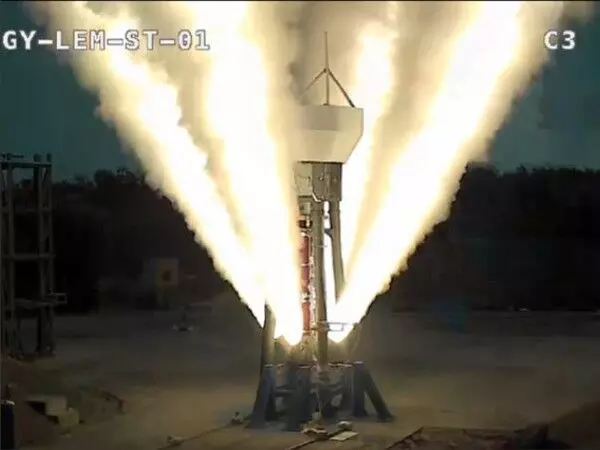ISRO tests the Gaganyaan Low Altitude Escape Motor (LAEM )successfully
The test-firing of the Crew Escape System's Low Altitude Escape Motor (LEM) from Sriharikota, Andhra Pradesh, was successfully completed by the Indian...

The test-firing of the Crew Escape System's Low Altitude Escape Motor (LEM) from Sriharikota, Andhra Pradesh, was successfully completed by the Indian...
The test-firing of the Crew Escape System's Low Altitude Escape Motor (LEM) from Sriharikota, Andhra Pradesh, was successfully completed by the Indian Space Research Organization (ISRO), marking another significant achievement in the Gaganyaan project, according to the officials.
"In the event of an emergency, the Crew Escape System (CES) removes the Gaganyaan mission's Crew module and saves the astronauts. LEM delivers the necessary propulsion to CES, allowing it to remove the Crew Module from the launch vehicle in the event of a mission abort during the initial phase of flight "said an ISRO statement.
The LEM is a remarkable special-purpose solid rocket motor that burns for 5.98 seconds while producing a maximum sea level thrust of 842 kN (nominal).
In contrast to traditional rocket engines, the LEM's nozzle end is situated at the front of the launch vehicle to prevent exhaust plumes from impinging on the crew module.
A reverse flow multiple nozzle must be used in this solid rocket motor as a result. The reverse flow nozzle alludes to a change in the direction of exhaust gas flow within the nozzle itself.
The space research organisation also listed the main goals of the static test, which included evaluating the ballistic parameters of the motor, validating the performance of the motor subsystem, confirming the design margins, and evaluating the thermal performance of the nozzle liners, particularly to confirm the erosion/ablative properties.
The other main reasons included the verification of the integrity of all interfaces, evaluation of the head-end mounted safe arm (HMSA) based ignition system performance, evaluation of the side thrust caused by misalignment, variation in flow, and other functional parameters, including flow reversal.





